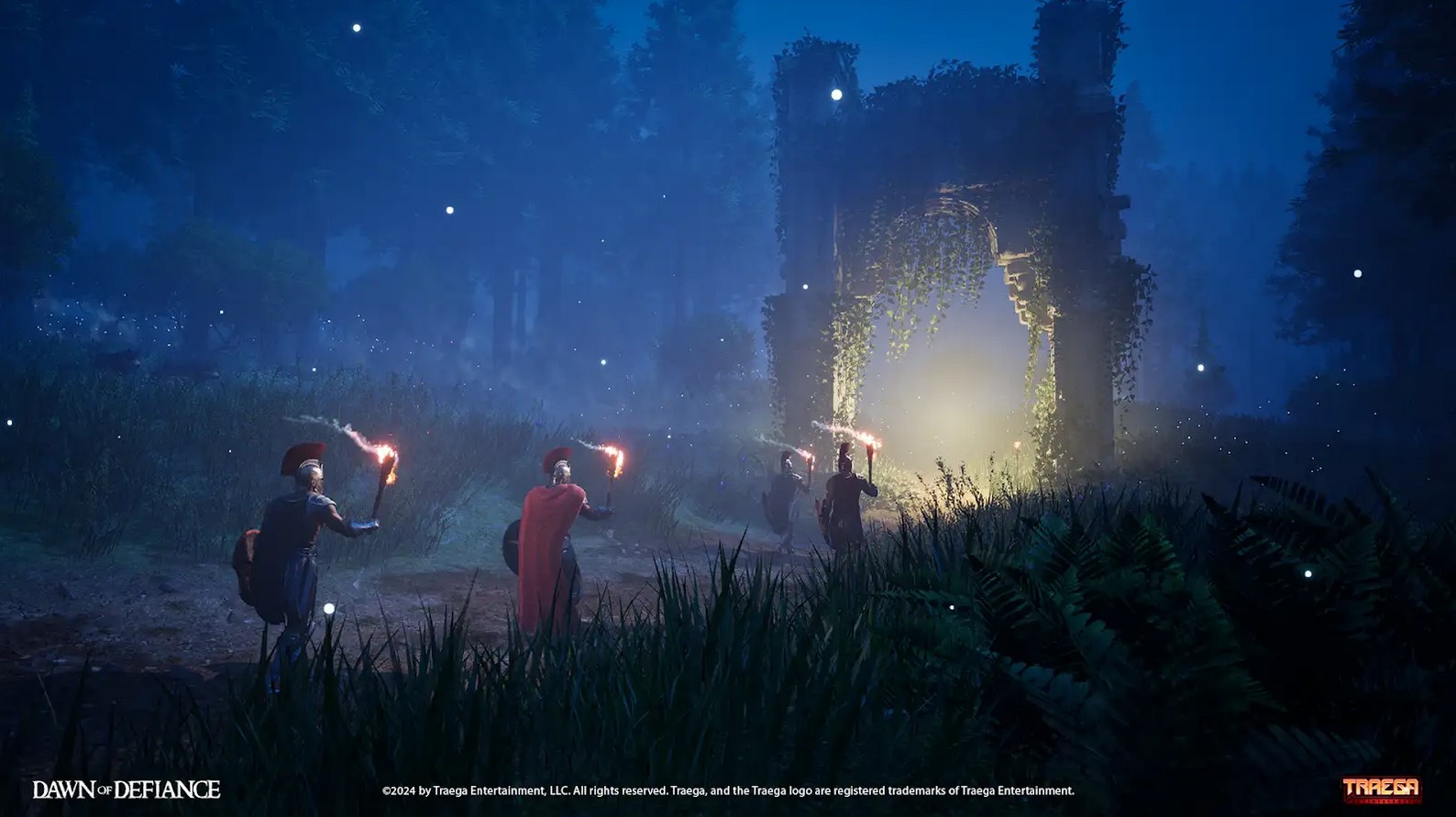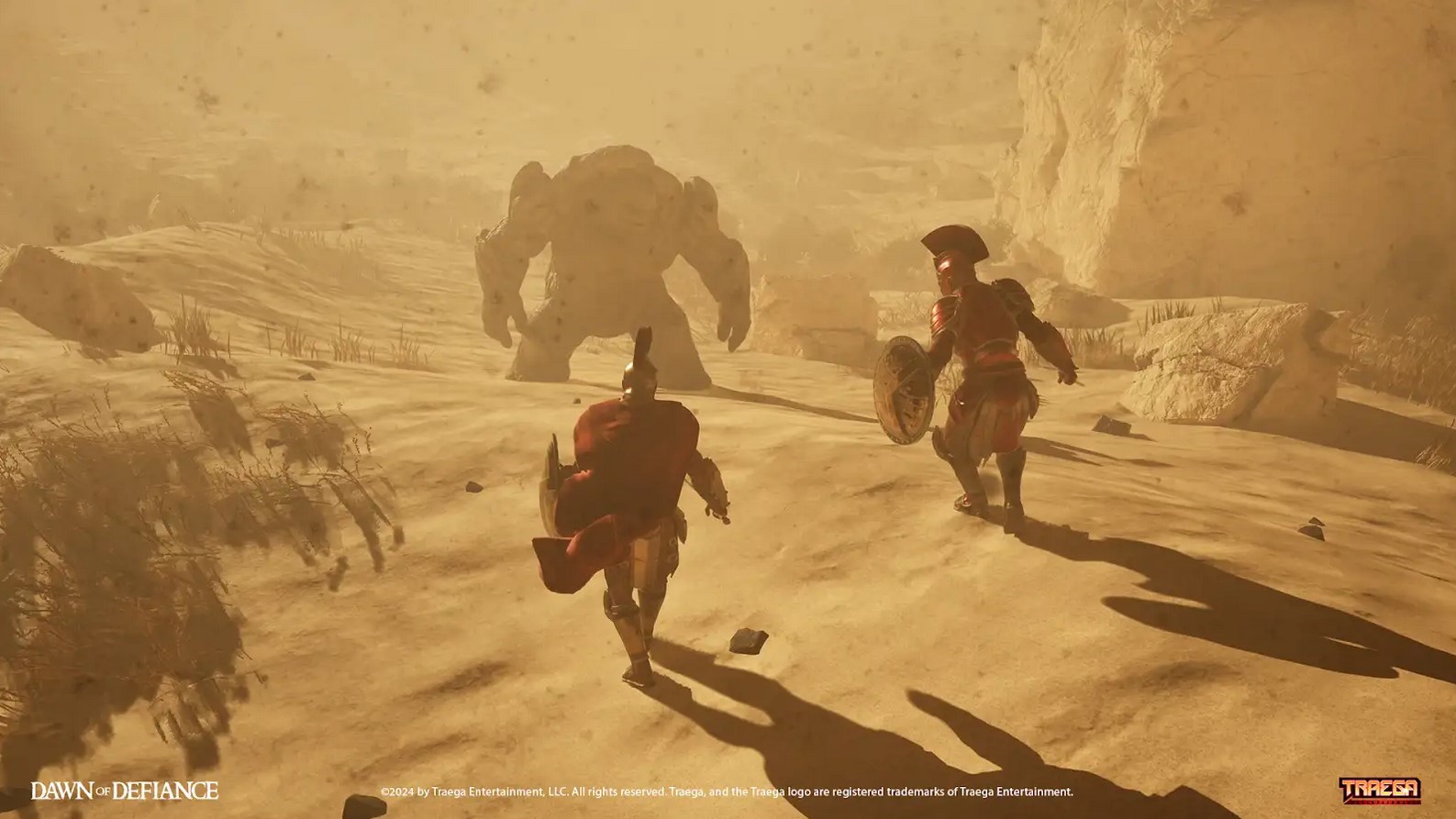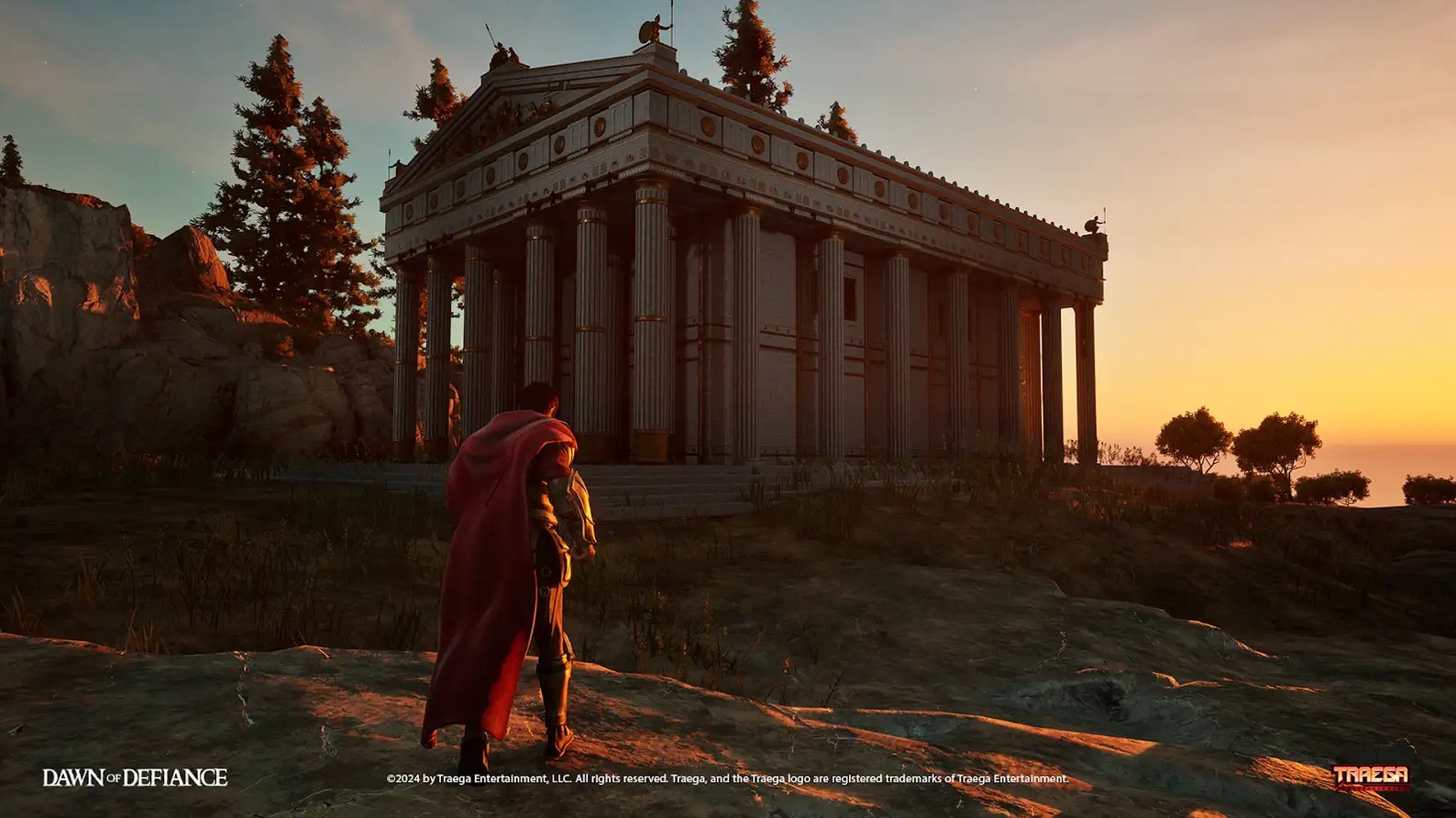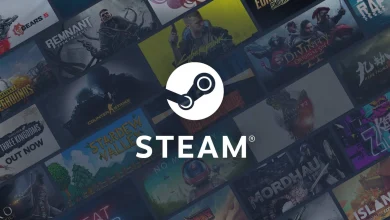Story Highlights
- Dawn of Defiance is a Greek mythology-inspired title by Traega that was released in early access last year.
- Players explore a crumbling empire in the game, where traditional hero narratives are rejected.
- We interviewed the developers at Traega Entertainment over email.
Dawn of Defiance is a Greek mythology-inspired open-world survival where players rise from humble soldiers to god-like warriors through divine trials and exploration. It is set across the Mediterranean biomes and mystical ruins, and the game blends mythological storytelling with crafting, combat, and progression-driven gameplay.
The game has continued to evolve since its early access release in August 2024. Around the time of its early access launch, we spoke with the devs at Traega Entertainment via email, and the following is a transcript of that interview.

Hello, I’m Casey, the Design Director here at Traega Entertainment.
Hey, I’m Tony, and I’m the Game Director at Traega.
We also have Dwight, Traega’s Art Director, and Nathan, Traega’s Audio Director.
Casey: Greek mythology offers a unique setting for the crafting survival genre. It offers up gorgeous landscapes, mystical theming, and the opportunity to reference a great deal of source material as we expand the game.
From a gameplay perspective, our players will complete labors to earn powerful godly blessings. This includes useful items to craft, as well as powerful abilities to earn. An example of one of the abilities is Glide, which can be seen in our trailers. It allows players to easily navigate across our landscapes in style. Players earn this ability early into their player experience, and it will be one of their core abilities throughout Early Access.
Casey: We are focused far more on Greek myth than historical Greece. Players will encounter environments that look and feel Greek. Items and equipment will also reflect those of ancient Greece. Beyond that, our focus is on providing a narrative and gameplay experience inspired by Greek mythology.
Casey: Players begin the game trying to prove themselves through the completion of Labors. They grow in strength as they complete these quests. Once sufficiently powerful, the player will encounter more iconic enemies and locations that will take on a stronger narrative focus as we expand in early access.
Dwight: Players will experience a mostly Mediterranean environment when exploring the Forgotten Crossroads. It’s hot, dry, arid, and filled with a variety of foliage types. We also introduced unique biomes to the map. Some that are representative of the typical climate in Greece, and some where we took creative liberties to tie in some mythological theming. Players will encounter mountainous regions that feel dry and desolate, to large spanning deserts where players can get a bit lost depending on the weather. We use these biomes as a chance to add unique weather conditions and enemy types as well. These will be continuously improved throughout Early Access.

Casey: Our Labors are themed around the specific deity they relate to. The Poseidon labor, for example, requires the player to reach and explore a chain of islands. The Ares labor requires the player to prove themselves in combat.
Many of our early game enemies are guardians of the Forgotten Crossroads. They look like standard Greek soldiers.
On the more unique, mythological side, players will encounter creatures such as Gorgons and Golems. They have unique abilities that the player must account for to overcome them.
Dwight: We decided to go with a semi-realistic art style for our game, where we can lean into being more creative with our art assets and not be tied 100% to historically accurate perfection. The visual direction we decided to focus primarily on is the Greco-Roman period. Players will find armor and weapons representative of Spartan hoplites to Roman centurions. This is also extended to usable structure kits and temples found in the world.
Dwight: The biggest challenge for the team is, “Greek statues of the Olympians are a must, but what else can we do that would be unique? What are some things that other games haven’t done yet?” We overcame this by concepting and prototyping locations based on landmarks that would be man-made and naturally formed. We find that lets us balance what we can do with the landscape, structures, and combine them both together. This gave us a very organized, categorical library of options. Then we layer this with lighting, biome selection, set dressing, enemy types, and loot.
Nathan: For the sound design, the goal was to create a realistic and rich environment, something cinematic rather than arcade. An informative, immersive, and aesthetic soundscape was always in mind. All of the sounds in the game are our original recordings, and the big benefit of that is the flexibility to fine-tune everything from the surfaces you walk on to the audio feedback of stealth mode. I’ve put a lot of thought into implementation and capturing the best sources.
As for music, we wanted to find a believably ancient Greco-Roman sound, which is challenging because, of course, we don’t have audio recordings of that era! Likewise, a lot of music we associate in modern times with regions like Asia, the Arab, the Middle East, and others actually originated from Greek music, so this made nailing down the right association trickier. But after research, we requested our composer, Jason Moncivaiz, to define the instrumentation with lyre, harp, aulos, pan flute, and voice. We also wanted to have an earthy acoustical texture, so we asked to omit some modern features like bowed instruments, piano, electronic, or any featured orchestra. Next, we defined the general type of melodic structure by looking at Greek music modes (Dorian, Aeolian, Phrygian, Lydian) as the main influence.
Casey: Dawn of Defiance has been in development for roughly 2 years now. We currently have 16 developers working on the project. Most of us work together onsite in the Nashville area, while a handful of the developers are remote.

Casey: So much! We intend to continue expanding on our narrative. This will lead to the player exploring iconic mythological lands, such as the Underworld! We also have plans to add new game mechanics, extend our quest lines, and add additional monsters, weapons, and buildables.
Internally, we have a planned feature set we’d like to add in, but that can certainly change as we start receiving feedback from our players. We plan on modifying our roadmap to address community priorities once they’ve had a chance to weigh in. We want to work with our community to expand on the game in ways meaningful to them.
Tony: Clear communication and honest marketing. We have a lot of ideas and ambitions for Dawn of Defiance, and we’re excited to hear the community’s ideas as well. EA is a great way to partner with other gamers to help shape what DoD will eventually become, and we look forward to getting it into their hands soon!
Casey: We try to be as open as possible to how players consume the content in the game. We have a varied selection of quests in the game, and some of these are tied to narrative progression, but players are never pressured to finish certain quests in a specific order or time period.
If a player wants to ignore the narrative completely to just focus on exploration and building, that is perfectly fine!
Once players move from the initial Isle of Arrival to the much larger Forgotten Crossroads, the narrative no longer limits player item or power progression either. Our critical path of items and buildables is governed by exploration, harvesting, and crafting.
Likewise, we’ve done our best to separate item aesthetics from strength. You shouldn’t have to choose between how an item looks and how it performs. We provide a wide variety of aesthetic customization options for all of our equipment.
Dwight: Start small and work your way up. Scope control is paramount with anything open world. Focus on what the size of your team is and what is possible with the talent you have.
Tony: Open-world games are very complex. It’s easy for a team to get ahead of itself because it’s such a creative field to work in. Everyone’s ambitions are so high that feature creep can crush production. With every decision, you must consider how it impacts the rest of the team and development. One simple implementation from one department could be a nightmare for the next department to deal with. Keep open communication and consider what impact the feature has on the rest of the team; this is vital for your game’s success. EA is your chance, as a studio, to prove to the community what your game can become. You are showing them potential and getting them excited about where the game can go.

Dawn of Defiance is an open-world survival title developed by Traega Entertainment. It is currently available in early access on Steam and Epic Games. We appreciate Casey, Tony, Dwight, and Nathan for answering our questions.
Thanks! Do share your feedback with us. ⚡
How can we make this post better? Your help would be appreciated. ✍



